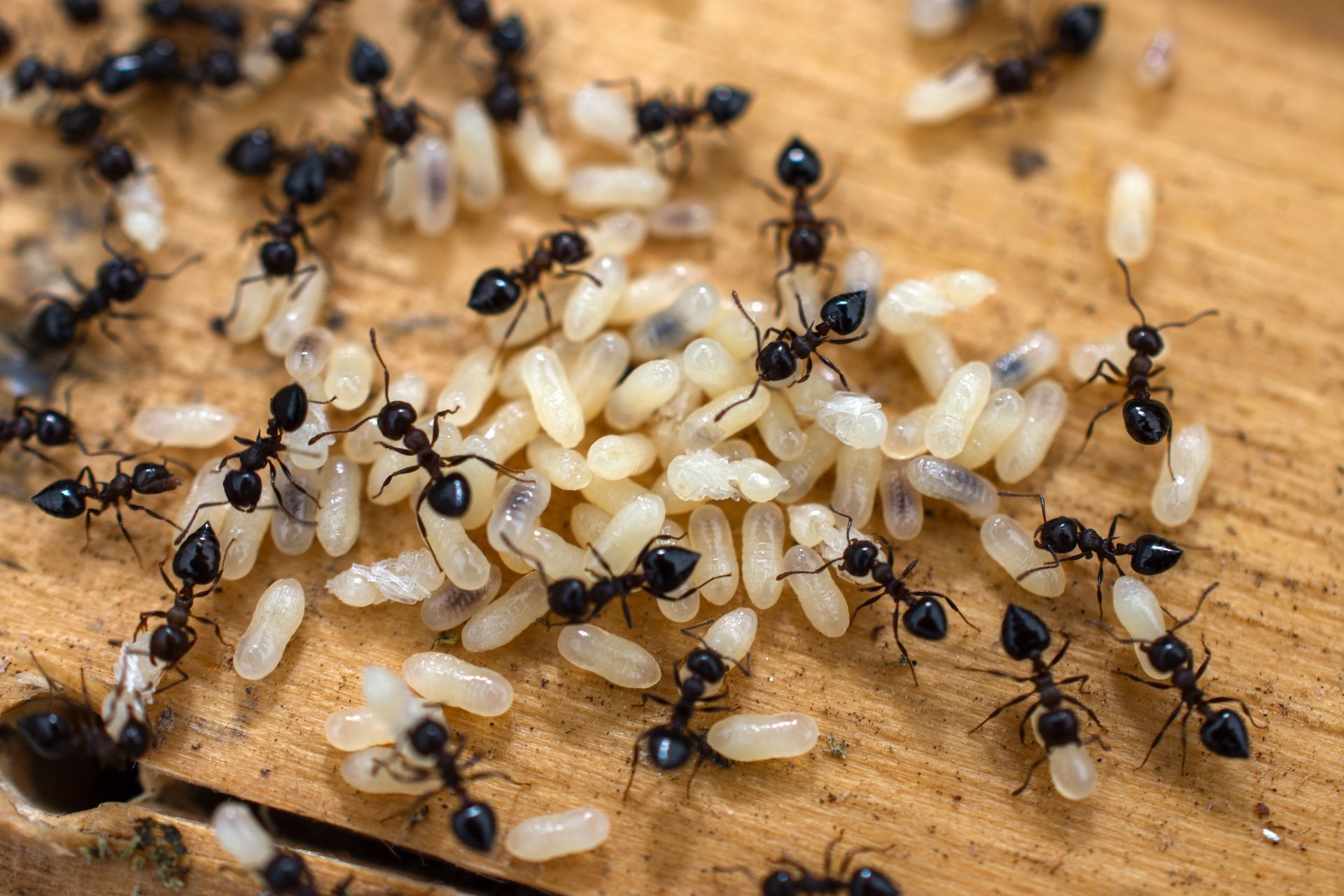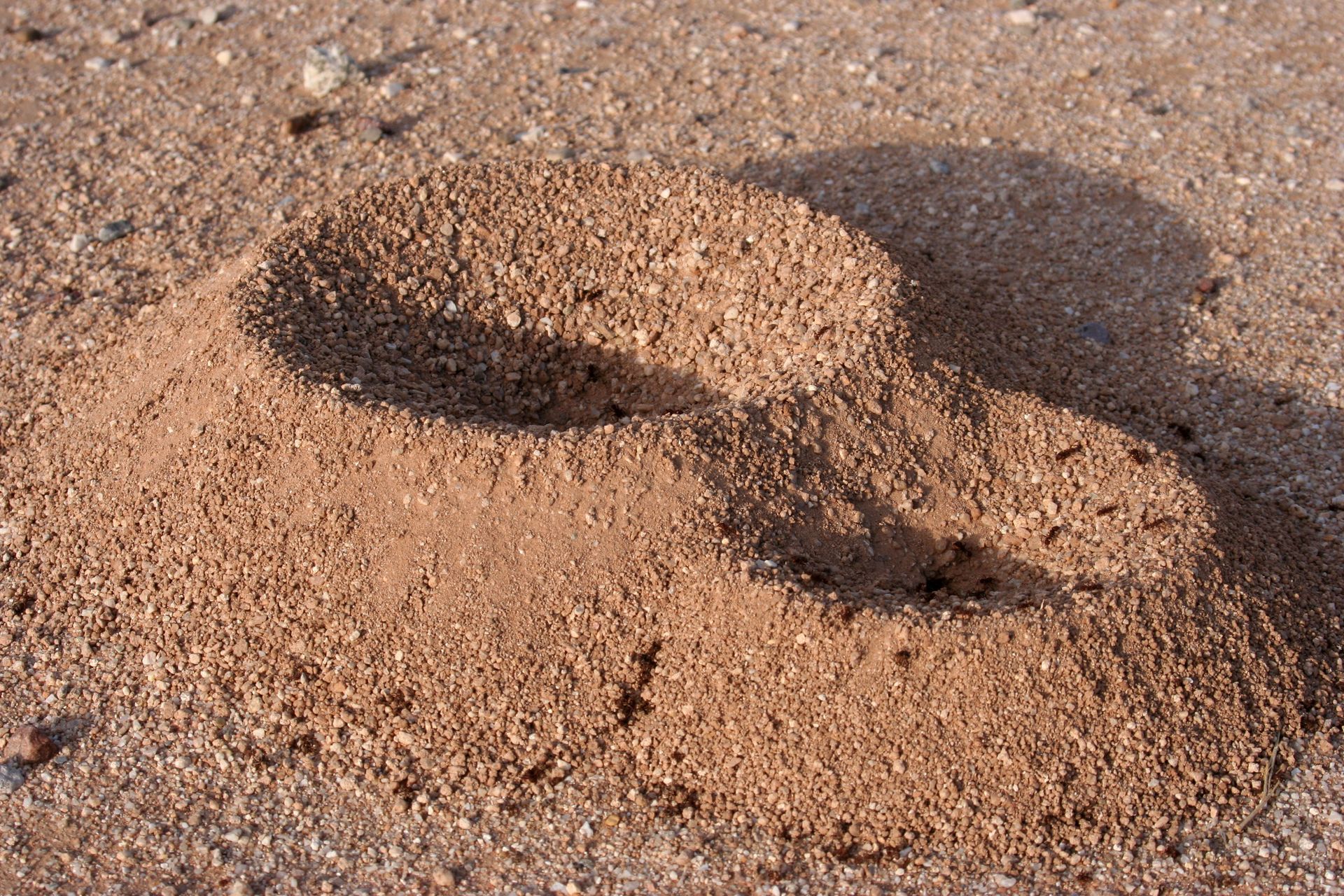How Do Ants Mate and Reproduce?

Ants have established themselves as one of the most successful and widespread insects across the globe. The secret to their ubiquity lies not just in their societal complexity or survival capabilities across diverse ecosystems, but in their fundamental reproduction strategies. Ant reproduction is an intricate process that is the foundation of the continuity and expansion of their colonies. This process involves a series of well-orchestrated steps, from the mating rituals that bring together fertile males and females, to the successful fertilization and subsequent development of offspring through the larvae and pupae stages to fully formed adults. Understanding how ants mate and reproduce offers fascinating insights into the biological and social mechanisms that contribute to the resilience and dominance of these insects in the natural world.
Ants Mating
Ant mating is a critical and fascinating aspect of their life cycle that is intricately linked to their eusocial structure and caste system. At the heart of this system is the queen ant, who begins her life as a winged "princess" destined to leave her birth colony during the nuptial flight. The nuptial flight is an event where fertile reproductive queens and male ants (drones) from various colonies take to the air to mate. This singular mating event is crucial because the queen stores the sperm received during this flight for her entire life and uses it selectively to fertilize eggs. This remarkable biological mechanism allows her to lay millions of eggs over her lifetime without the need to mate again. The fate of these eggs is determined by fertilization because fertilized eggs develop into female worker ants or soldiers while unfertilized eggs become male drones. Drones serve one purpose and that is to mate with future queens before meeting their end.
Ant Reproduction
Ant reproduction is a meticulously organized process that plays a crucial role in the survival and expansion of ant colonies. Following the nuptial flight, the queen ant embarks on the monumental task of establishing and populating a new colony. She continuously lays eggs, utilizing the sperm stored from her sole mating event to selectively fertilize eggs based on the colony's needs. This ability allows her to control the sex and role of her offspring. The determination of sex through whether an egg is fertilized or not, known as haplodiploidy, is a common mechanism across Hymenoptera, which is the order that includes ants, bees, and wasps.
After mating, both the queen and male ants lose their wings, with the male's role concluding shortly after mating and the queen moving on to establish her nest. In this new home, the queen single-handedly nurtures her first brood of workers, who will then assume the responsibilities of colony maintenance and expansion. The queen's production of workers, and occasionally new virgin queens, is regulated by a sophisticated system of chemical secretion that influences the development of larvae. This system ensures the colony can sustain itself and grow while preparing for the time when it will be strong enough to produce new queens and males for subsequent nuptial flights. Ants undergo complete metamorphosis after they hatch from eggs and then transition from the larval stage to pupal stages before reaching adulthood.
Do Drones Mate with Queens from the Same Colony?
In the intricate world of ant reproduction, the mating process is designed to maximize genetic diversity and the success of the new colonies. Males, or drones, generally do not mate with queens from their own colony. Instead, they mate with virgin queens, known as alates, from different colonies during their nuptial flight. This behavior is largely influenced by specific pheromones released by the alates themselves to attract mates. The timing and sequence of these flights are meticulously orchestrated to ensure that males and females from various colonies mix thoroughly which increases the genetic diversity of the offspring.
For example, in species like Camponotus, males take flight first and swarm to release pheromones that prompt the females to fly and mate. This sequence can vary among species with females leading the way for some species. Environmental factors such as temperature can also play a role in determining the timing of these flights. This ensures that mating occurs under optimal conditions. Although ants exhibit a broad array of mating strategies, one common goal across species is to avoid inbreeding and its associated genetic pitfalls. The unique haploid genetics of ants provide a natural filter against recessive harmful mutations which makes mating outside the colony a crucial strategy for the health and success of future generations.
The Role of the Ant Queen in Reproduction
The queen ant, or gyne, holds a pivotal role in the reproductive system of an ant colony because she acts as the primary and often only egg-laying individual within the community. Her genetic material is passed down to all subsequent generations of the colony which makes her essentially the mother of the entire population. While most species’ queen ants mate only once before laying eggs fertilized by the stored sperm, some species exhibit remarkable exceptions. For instance, certain species like the Cataglyphis reproduce through asexual parthenogenesis, or cloning, which eliminates the need for mating. This method of reproduction produces only female offspring which are genetic replicas of the queen.
No matter what the species, queen ants are capable of laying thousands to millions of eggs over their lifetimes. The number of eggs produced largely depends on the species and environmental conditions. The longevity of queen ants can be astonishing, with recorded instances of queens living up to nearly 30 years in captivity and in the wild. This extended lifespan, combined with their prolific reproductive capacity ensures the sustained growth and survival of the colony. In terms of colony structure, ant species can vary widely. Some species will operate with a single queen while other species’ colonies will grow to support hundreds of fertile queens. Colonies that contain hundreds of queens are known as “super colonies” and these queens contribute to the genetic diversity and robustness of the colony.
Can There Be Multiple Ant Queens?
Multiple queen colonies are observed in certain ant species, and they are known as polygyne colonies. In these colonies, several queens coexist and collaborate in the reproductive process in order to contribute to the rapid growth and expansion of their territory. This setup allows for a form of reproduction known as colony budding which is where a group of workers and one or more fertile queens leave their original nest to establish a new satellite colony. This strategy does not involve mating swarms and instead relies on the direct relocation of part of the colony to new nesting sites.
The presence of multiple queens within a single colony can significantly enhance the resilience and longevity of a colony. Unlike single-queen colonies, where the death of the queen often spells the demise of the entire colony, polygyne colonies can survive and continue to thrive through the contributions of the remaining queens. This system is particularly prevalent among species such as Pharaoh ants, fire ants, ghost ants, and Argentine ants which are known to be extremely challenging to control and exterminate. The cooperative effort between queens and workers in these budding colonies ensures the successful establishment and maintenance of new nests.
Do Queenless Ant Species Exist?
Queenless ant species also exist which introduces a unique variation in the reproductive organization of ant colonies. In these species, the traditional roles are somewhat redefined with intermediate castes like gamergates taking on reproductive duties. Gamergates are fertile female workers that can be fertilized and lay eggs. They serve a similar reproductive function to that of queens in other ant species. This adaptation allows for the continuation of the colony's lifecycle without the presence of a designated queen. Such queenless species often coexist with species that have 'normal' queens.
Can Worker Ants Reproduce?
In the diverse world of ants, which span across approximately 16,000 identified species, the capacity for reproduction among worker ants varies significantly. While many species adhere to the traditional structure of sterile worker ants serving the colony, certain ants species exhibit unique reproductive behaviors. For instance, workers of some species can lay trophic eggs. These are unfertilized eggs that do not hatch but serve as a vital food source for the colony.
Other 'clonal' ant species like Ooceraea biroi, the clonal raider ant, blur the lines between traditional ant roles even further. In these colonies, every individual is capable of reproducing clonally through thelytokous parthenogenesis which essentially means they can clone themselves. This unique reproductive strategy eliminates the need for a queen altogether and allows the colony to expand through the synchronized laying of eggs by all members. Interestingly, even within these queenless colonies, certain workers specialize in brood care while others are dedicated to foraging and colony maintenance.
Contact EcoGuard Pest Management if You Are Dealing with Ants
If you're facing challenges with ant infestations in your home or property, EcoGuard Pest Management is here to offer expert assistance. Our team of experienced professionals understands the complex behaviors of ants and utilizes effective, environmentally friendly solutions to address your specific situation. Whether you're dealing with a traditional colony or one of the more unique reproductive strategies of ants, we're equipped to provide the support you need. Don't let ants disrupt your peace of mind—contact EcoGuard Pest Management today for a comprehensive approach to ant control and prevention.
Ant Reproduction FAQs
How do you know if ants are mating?
You can tell if ants are mating by observing their nuptial flight. This is a key reproductive event where winged male ants (drones) and winged virgin queen ants (alates) emerge from their colonies to mate. This event is usually triggered by specific environmental conditions that are followed by swarms of flying ants in the air. This occurrence is a clear sign of ants’ mating process. After mating, male ants typically die, and fertilized queens land to start new colonies after shedding their wings.
How do ants make babies?
Ants reproduce through a process initiated by the nuptial flight, where virgin queen ants mate with males in the air. After mating, the queen stores the sperm in a specialized pouch and uses it to fertilize eggs throughout her lifetime. Fertilized eggs can develop into female worker ants or new queens, while unfertilized eggs become male ants.
Can ants reproduce without mating?
Some ant species can reproduce without mating through a process called parthenogenesis, where females produce offspring without fertilization by a male. This method is observed in certain clonal ant species, such as Ooceraea biroi, where all individuals in the colony can clone themselves. This leads to the production of genetically identical offspring and allows the colony to expand even in the absence of males or traditional mating.
What happens to male ants when they mate?
When male ants mate, they fulfill their primary biological role of fertilizing the queen during the nuptial flight. Shortly after this singular mating event, male ants typically die. This cycle ensures that the queen has the necessary sperm to fertilize her eggs throughout her lifetime, while the life cycle of male ants concludes soon after mating.

















